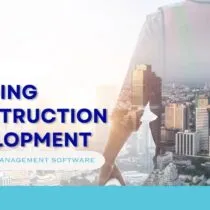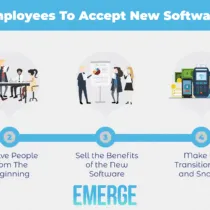4 Types of Purchase Order every Business should Know
Every company wants to keep tabs on their spending. Purchase orders help firms determine how much they need to spend on purchases. Well, the buying process doesn’t happen blindly as some legally binding documents are prepared for that purpose.
In this article, you’ll learn everything you need to know about the four types of purchase orders.
But first, let’s get to understand what a purchase order is.
What is a Purchase Order?
A purchase order is a type of document sent from the buyer to the seller requesting the supply of goods or services. The document usually contains the specific details of the product, such as type, quantity, date of delivery, and payment terms.
When a vendor accepts the purchase order, it becomes legally binding to the two parties. You’re probably wondering why to go through all the trouble of creating a purchase order when you can just verbally request an order.
A PO makes the transaction smooth because a buyer can clearly outline what they want to be delivered instead of back-and-forth communication. Besides, a purchase order protects the supplier because in the event a client declines a product they had ordered, the supplier gets legal protection. It’s also important to note that you can use a purchase order to request funding from financial institutions as a supplier.
Most people tend to be confused between purchase orders and invoices. But wait, what’s the actual difference between the two?
The difference between a Purchase Order and an Invoice
As noted above, the buyer creates a purchase order detailing what they want, quantity, payment details, and date of delivery. On the other hand, a supplier creates an invoice after delivering the said goods. An invoice documents the delivered goods, date of delivery, quantity, price, date of payment, and payment details. An invoice quotes the purchase order as evidence.
Now that we know some of the basics let’s understand the four types of purchase orders and how they work.
Types of Purchase Orders
There are four types of POs that a company can raise in different situations. In this section, we’ll understand every kind of purchase order and when you can use it.
1. Standard Purchase Orders
A standard purchase order is by far the most used type of purchase order. Companies use this type of PO when they are certain of their buying requirements. Standard POs are also applicable in situations where a business wants to make a one-off order.
Standard purchase orders contain the following details;
- List of the items
- Quantity of each item
- Date of delivery
- Terms of payment
- Location of delivery
An example of a scenario where a standard purchasing order can be raised is if a business goes out of printing papers. In that case, the procurement department will raise a standard PO detailing how many printing papers they need, and when they want them delivered. In some situations, a business may only create a standard purchasing order as a reference but choose to pick the items from a specific supplier.
2. Blanket purchase orders
Also known as standing orders, blanket purchase orders are used in repetitive purchase transactions. In this type of PO, you specify the items you want and the terms of delivery. Usually, the amount is unknown. The business can request the delivery of these items in batches within a specified period. Payments can also be made in batches for this type of purchase order.
For example, a hospital business may have connections with many suppliers. Hospitals may tend to raise blanket purchase orders because they aren’t sure of the quantity of supplies they would need in a certain period.
Blanket purchase orders are preferred by companies that require bulk goods delivered in small quantities, such purchase orders are the most ideal for companies looking to streamline their procurement processes.
Having one contract, allows a business to negotiate discounts based on bulk orders. A buyer can therefore take advantage of low prices based on the quantity ordered. Besides, a business can also concentrate on more important functions of the business other than shipment negotiations for every delivery.
However, businesses need to take caution when signing blanket purchase orders with different suppliers. Only engage a specific vendor if you’re sure that they’ll supply the goods in question at the agreed time.
Also, make sure that you can trust the quality of the products or you could end up receiving poor quality products. Most importantly, you need to have clear terms on prices because you don’t want to deal with price fluctuations that could hurt your business.
Blanket purchase orders are beneficial to the supplier because it assure them of continuous business from a buyer. The fact that the supplier has a lot of time to prepare for the delivery of goods is also advantageous to the seller.
There’s only one main challenge when using a blanket purchase order – forecasting the quantities needed! A buyer may have an intent to buy certain products but may lack the proper estimates of how many they need within a year. Not to worry because that’s where data analysis comes in to give accurate predictions based on past data.
3. Planned purchase orders
Planned purchase orders contain information about the products, quantity, and price but lack a specific delivery date. A business that uses a planned purchase order usually plans to have a certain amount of goods delivered within a particular time frame. So, the firm raises a PPO and agrees to the price stated by the supplier. The buyer then indicates the release dates as the year progresses, stating the payment terms for each release.
A scenario where a PPO is used is where a buyer specializes in a clothing line. The buyer may indicate they want say 1,000 pieces of clothes in one year. The buyer may then ask for shipments of about 100 pieces every month.
4. Contract purchase order
Contract purchase orders only contain the terms of payment. The quantity and products that a buyer needs aren’t specified in this purchase order. Contract purchase orders are common in the import business.
For example, someone specializing in importing different items cannot specify the items they need until they get customers for the said items. Now, in such a situation, the buyer usually creates a standard purchase order against the contract purchase order whenever they want items shipped.
Now that we know the four types of purchase orders, let’s understand how they work.
How do Purchase Orders Work?
Here are the steps followed by businesses when creating a purchase order.
- A business realizes the need to make a purchase.
- They create a purchase order detailing the list of items, price, quantity, delivery, and terms of payment.
- The purchase order is sent to the purchasing approval department before being sent to the supplier.
- The supplier agrees to the purchase order or disagrees depending on the availability of the products.
- If the supplier doesn’t agree to the purchase order, it’s canceled.
- If the supplier agrees, the items are delivered to the specified location.
- The supplier then creates a sales invoice and references the purchase order.
- The buyer makes the payment, and the order is closed.
It’s also important to note that some suppliers may request the buyer to make payments before the delivery as part of their terms and conditions. In other cases, the buyer may be given credit to pay on a later date usually within 30 – 90 days.
What’s the Future With Purchase Orders?
Most companies still use manual purchase orders. Well, truth be told, there are a zillion problems with the manual creation of POs. For example, both parties cannot track the orders, they are dependent on human intervention, and errors can occur in the process. The good news is that you can always automate the process.
The process of automation involves integrating this important part of the procurement process with other systems such as accounting. Other than integration, the purchase order forms are also available electronically. By doing so, the order flows seamlessly and can be tracked by the buyer and the seller. Besides, it’s possible to view past transactions on the system.
Automation speeds up the process of creating purchase orders, and approval, and eliminates any errors. Besides, who still wants to have many files filled with manual purchase orders in the 21st century? Imagine how hectic it can be to retrieve such files manually in case you need to countercheck anything.
Conclusion
Purchase orders are essential documents in businesses because they help protect both the seller and the buyer. Whether you use a standard, planned, blanket, or contract purchase order, they all become legally binding upon both parties’ acceptance. The above guide lets you understand what PO to use for your business and in which situations.




